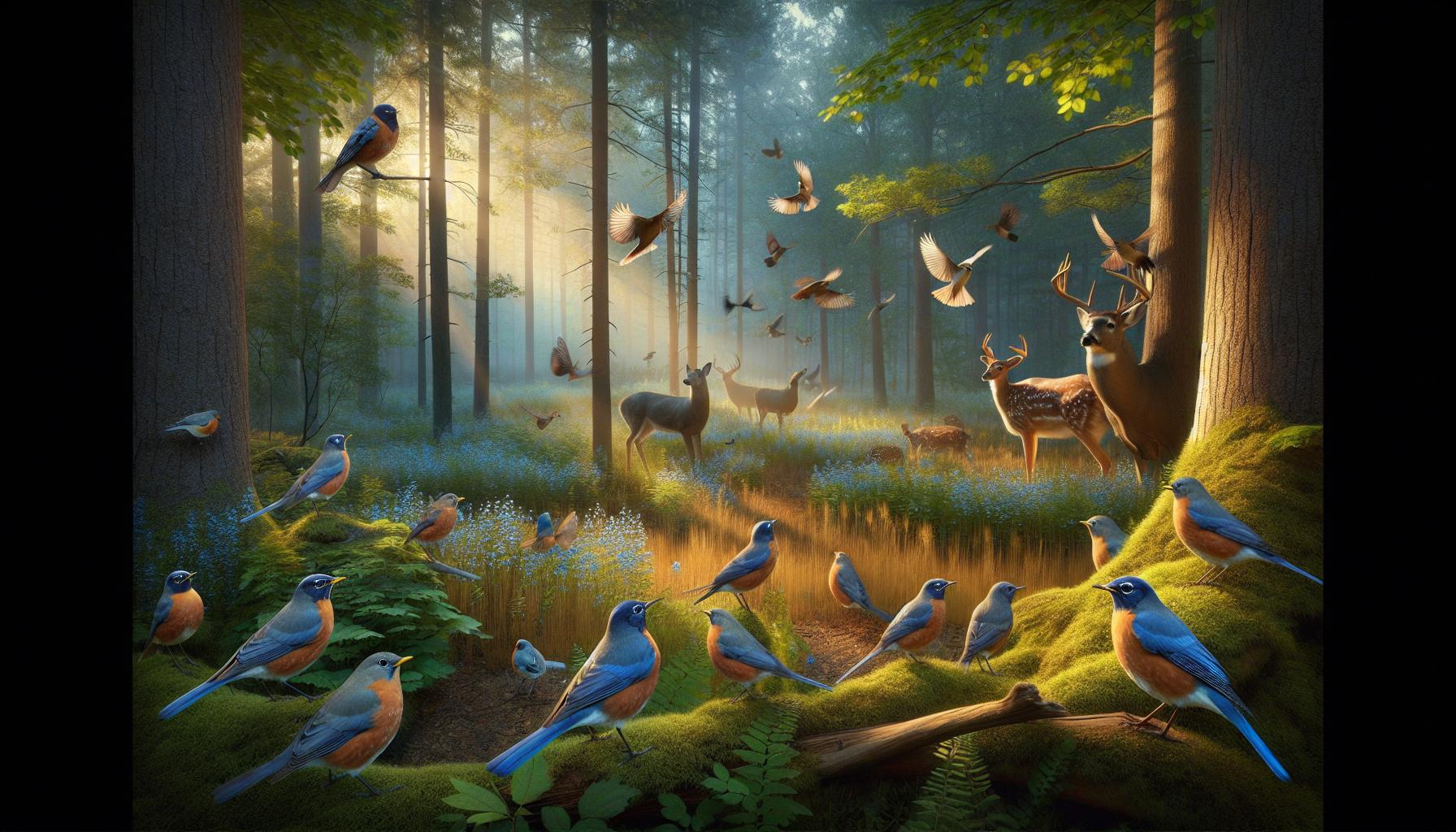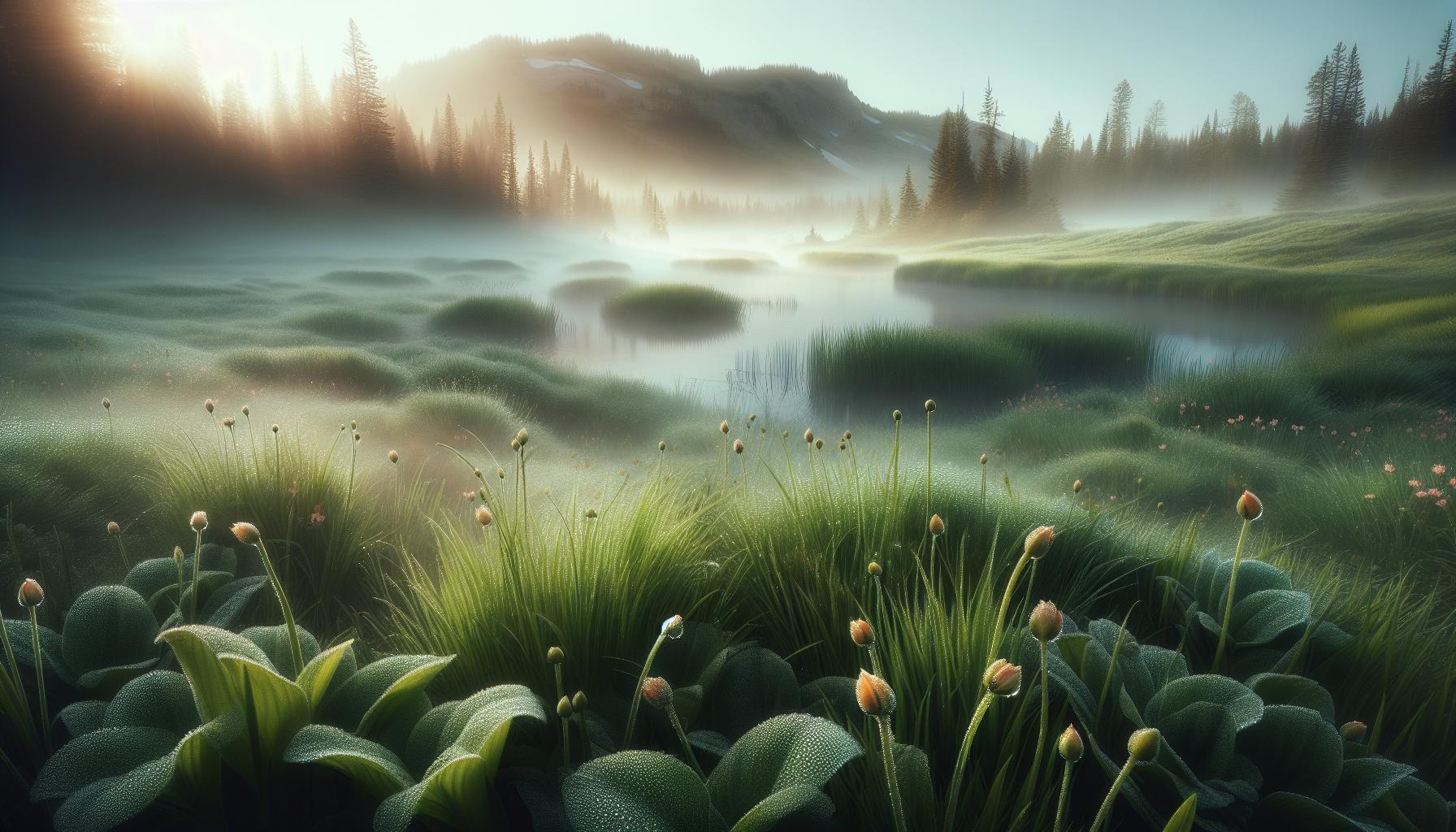Starting each day with nature’s beauty fills me with boundless joy and gratitude. The gentle rays of sunlight peeking through my window remind me of the countless wonders waiting to be discovered just outside my doorstep. I’ve learned that embracing the morning’s natural splendor can transform our entire day. Whether it’s listening to birds chirping their morning songs or feeling the crisp dew beneath my feet, these simple moments help me connect with the world around me. As someone who’s spent years exploring and photographing nature’s morning magic, I can confidently say there’s no better way to begin your day than by immersing yourself in the outdoors when the world is just waking up.
- Starting your day with nature’s beauty can positively transform your daily experience and mindset
- Early morning hours (5:30-7:00 AM) offer the best natural lighting conditions for observing and photographing nature
- Wildlife is most active during dawn hours, with peak activity occurring between 5:00-8:00 AM
- Morning dew and fog create unique photography opportunities, especially when temperatures are 45-55°F with high humidity
- Each season presents distinct morning characteristics and photography possibilities, from spring wildflowers to winter frost
- Strategic location selection, like forest trails and waterfront areas, significantly enhances nature viewing experiences
Beautiful:kb3jxgl8yte= Nature:0k7_z8-ej4a= Good Morning
The gentle sunrise illuminates my path through the misty meadows at 5:30 AM. Morning dew sparkles on delicate spider webs stretched between blades of grass creating natural prisms of light. I capture these fleeting moments with my camera, documenting nature’s awakening in golden hues.
Here’s what I observe during my dawn nature walks:
- Watch songbirds emerge from their nests performing their morning chorus
- Feel the crisp morning breeze carrying the scent of pine needles
- Spot deer grazing peacefully in clearings bathed in soft light
- Notice wildflowers slowly opening their petals to greet the sun
- Hear the gentle rustling of leaves in the morning air
The shifting light transforms common landscapes into extraordinary scenes:
| Time | Natural Phenomena | Visual Impact |
|---|---|---|
| 5:00 AM | Civil twilight begins | Soft blue hues appear |
| 5:30 AM | First light | Golden rays pierce clouds |
| 6:00 AM | Sunrise | Vibrant colors paint sky |
| 6:30 AM | Full daylight | Sharp contrasts emerge |
I position myself in strategic locations to photograph:
- Mountain ridges catching first light
- Fog lifting from valley floors
- Dewdrops glistening on spider webs
- Sunbeams filtering through tree canopies
- Wildlife emerging for morning activities
These dawn experiences connect me with nature’s daily rhythm as colors intensify minute by minute. Each morning brings unique lighting conditions transforming familiar landscapes into fresh compositions.
The Magic of Early Morning Light

Early morning light transforms ordinary landscapes into extraordinary scenes between 5:30-7:00 AM. I’ve documented these magical moments through my lens, capturing nature’s transition from darkness to golden brilliance.
Golden Hour Photography Tips
I capture the best golden hour shots by positioning subjects with back-lighting from the rising sun. These settings optimize morning photography:
- Set ISO between 100-400 to minimize noise while maintaining sharpness
- Open aperture to f/2.8-f/5.6 for soft background blur
- Use exposure compensation of +0.3 to +0.7 for balanced highlights
- Position subjects at 45-degree angles to maximize light wrap
- Frame compositions with leading lines toward the light source
- Shoot in RAW format to preserve highlight detail
Natural Color Palettes at Sunrise
The sunrise progression creates distinct color phases I’ve documented:
| Time | Color Palette | Typical Subjects |
|---|---|---|
| 5:30-6:00 AM | Blue hour – Deep blues indigos | Silhouettes water reflections |
| 6:00-6:30 AM | Purple pink orange | Cloud formations horizon glow |
| 6:30-7:00 AM | Golden amber yellow | Backlit foliage dew drops |
| 7:00-7:30 AM | Warm white highlights | Textured landscapes shadows |
- Capturing graduated color transitions in the sky
- Finding reflective surfaces like water dewdrops
- Positioning elements within complementary color zones
- Using natural frames to showcase color contrast
- Documenting how light affects different textures
Wildlife Activity During Morning Hours

I’ve documented consistent patterns of wildlife behavior during my early morning nature walks, with peak activity occurring between 5:00-8:00 AM.
Birds and Their Morning Songs
The dawn chorus begins 45 minutes before sunrise, with American Robins leading the symphony. I observe Eastern Bluebirds joining at sunrise, followed by Northern Cardinals 15 minutes later. Through my nature photography sessions, I’ve captured distinct singing patterns:
- American Robins start with clear whistled phrases
- Eastern Bluebirds contribute soft warbling notes
- Northern Cardinals add piercing whistles
- Black-capped Chickadees join with their fee-bee songs
- Song Sparrows complete the chorus with melodic trills
- White-tailed Deer emerge from forest edges at first light
- Eastern Cottontails forage in open areas by sunrise
- Eastern Gray Squirrels begin foraging 30 minutes after dawn
- Red Foxes return from night hunting as light increases
- Groundhogs appear in fields by mid-morning
| Time | Wildlife Activity |
|---|---|
| 5:00 AM | First bird calls begin |
| 5:30 AM | Dawn chorus peaks |
| 6:00 AM | Deer family groups visible |
| 6:30 AM | Small mammals most active |
| 7:00 AM | Predator species return to dens |
Morning Dew and Natural Phenomena

I observe distinct atmospheric phenomena during my dawn photography sessions, capturing the interplay between temperature variations and moisture in the morning air. These conditions create ephemeral displays that transform the landscape between 5:00-7:00 AM.
Fog and Mist Effects
During my early morning shoots, I encounter ground fog forming in valleys when temperatures drop 2-3 degrees below the dew point. The mist creates layered effects at varying heights: 6 inches above meadows, 2-3 feet over ponds and 10-15 feet in forested areas. This natural phenomenon peaks at sunrise, creating ethereal scenes as light filters through the vaporous layers. I’ve documented how the fog dissipates in patterns, starting from the outer edges at 6:30 AM and clearing completely by 7:15 AM on calm mornings.
Dewdrops on Plants and Flowers
At 5:30 AM, I photograph dewdrops adorning spider webs, grass blades and flower petals. Each water droplet acts as a natural macro lens, reflecting the surrounding environment in perfect miniature. The optimal conditions occur when relative humidity reaches 90-100% with temperatures between 45-55°F. I’ve cataloged distinctive dew patterns on different surfaces:
- Grass blades: Uniform rows of droplets spaced 2-3mm apart
- Spider webs: Perfectly spherical beads ranging from 1-2mm in diameter
- Flower petals: Asymmetrical droplets clustering near petal edges
- Leaf surfaces: Large 4-5mm drops forming at leaf tips and veins
During my documentation, temperature variations of just 1-2 degrees create noticeable differences in dew formation patterns and duration.
Best Locations for Morning Nature Walks
Based on my extensive early morning nature photography sessions, I’ve identified specific locations that offer exceptional opportunities for morning nature encounters. Each setting provides unique elements that enhance the dawn experience.
Forest Trails and Woods
Dense forest canopies create magical light filtering effects between 5:30-7:00 AM, particularly in deciduous forests with mature oak, maple or birch trees. I photograph distinct features along these trails:
- Old-growth sections with 50+ year trees that form natural archways
- Elevated paths that catch first light through the canopy at 6:15 AM
- Stream crossings where morning mist lingers until 8:00 AM
- Natural clearings that showcase wildflower meadows
- East-facing ridges that provide unobstructed views of sunrise
- East-facing shorelines for direct sunrise reflections on calm water
- Protected coves where waterfowl gather at first light
- Marshy areas with active wildlife like herons feeding at 6:00 AM
- Boardwalks that extend over water for unobstructed horizon views
- Rocky outcrops that create textural contrasts with smooth water
- Small islands that serve as natural frames for sunrise compositions
| Location Type | Peak Activity Time | Key Features |
|---|---|---|
| Forest Trails | 5:30-7:00 AM | Filtered light, mist pockets |
| Lake Areas | 5:00-7:30 AM | Water reflections, wildlife |
| Marsh Zones | 6:00-8:00 AM | Bird activity, fog patterns |
| Ridge Lines | 5:45-6:30 AM | Direct sunrise views |
Seasonal Morning Beauty in Nature
Each season transforms the morning landscape with distinctive characteristics that I capture through my lens. My extensive documentation reveals predictable patterns unique to each part of the year.
Spring and Summer Mornings
Spring mornings burst with vibrant life from 4:30-7:00 AM. I photograph Eastern Bluebirds gathering nesting materials in April meadows while Virginia Bluebells carpet forest floors. Dawn temperatures averaging 55-65°F create perfect conditions for morning fog in low-lying areas. Summer brings dramatic sunrises at 5:15 AM with rich golden light illuminating:
- Flowering meadows filled with Black-Eyed Susans in July
- Morning glories opening their blooms at first light
- Monarch butterflies warming on milkweed leaves
- Ruby-throated Hummingbirds visiting cardinal flowers
Fall and Winter Daybreaks
Autumn mornings emerge later, starting at 6:45 AM with frost-covered landscapes. I document the interplay of light through:
- Maple leaves transitioning from green to gold in October
- Ground fog rising from cooling earth at 45°F
- White-tailed deer moving through misty fields
- Dark-eyed Juncos arriving at feeding areas
- Ice crystals sparkling on evergreen needles
- Pink-orange alpenglow on fresh snow
- Steam rising from unfrozen water bodies
- Northern Cardinals providing bright contrast against white landscapes
Nature’s morning display has become an integral part of my daily routine and creative expression. Through my lens I’ve discovered that each dawn brings a unique opportunity to witness and capture the world’s awakening beauty. The combination of perfect lighting golden hour wildlife activity and seasonal transformations creates an unmatched spectacle that I’m privileged to experience.
I’ve learned that the best moments in nature photography come from showing up consistently and letting the natural world reveal its secrets. My morning adventures have taught me that beauty isn’t just about the perfect shot – it’s about being present for nature’s daily performance.
Starting your day with nature’s symphony can transform not just your photography but your entire perspective on life. I encourage you to step outside tomorrow morning and experience this magic for yourself.

